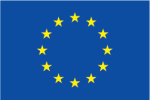Publication bias has been observed in various fields of scientific literature for almost four decades[i]. Usually, scientific research with negative results is less likely to be published than research with positive results. Meantime, research with positive results in scientific literature averagely increased by 6 percent early from 1990 and reached a soaring 85 percent in 2007[ii].
To better understand the topic we are dealing with, let’s first find out what positive and negative results mean. Positive research results support the research hypothesis, such as that a new treatment is superior compared to the existing one and presents statistically significant results. Meanwhile, the term negative research result can generate confusion because it refers to both: insufficient statistical significance and proven null hypothesis[iii], where the new treatment being tested had no effect as compared to the existing one.
A misconception is often found in the literature that a study without positive results was unsuccessful[iv]. This mistaken belief is so widespread that both editors and the authors themselves do not tend to publish negative results, as such publications receive hardly any readers and even fewer citations[v].


Leave a Reply